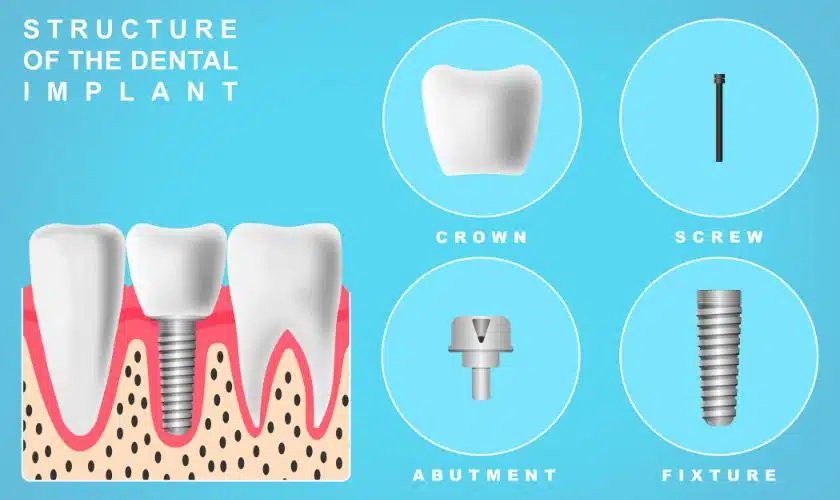Introduction
Dental implants have transformed restorative dentistry by providing a long-lasting, aesthetically pleasing replacement for lost teeth. For those considering dental implants in Okemos, MI, understanding the benefits, procedure, and aftercare involved is essential. This guide will delve into these aspects comprehensively, equipping you with the knowledge required to make an informed decision. In addition to improving appearance, dental implants are essential for preserving oral health and general wellbeing.
The Benefits of Dental Implants
When compared to conventional dentures and bridges, dental implants have many benefits. They offer a long-lasting remedy that closely resembles the appearance and capabilities of real teeth. The following are some main advantages:
- Improved Appearance: Dental implants seem more natural since they feel and look like your real teeth, unlike other dental prostheses. Because of their seamless integration with your jawbone, they will look just like your natural teeth.
- Enhanced Comfort: Implants remove the discomfort associated with removable dentures since they become integral to you. You no longer have to worry about slipping or clicking, which makes speaking and eating more comfortable and natural.
- Better Oral Health: Unlike a bridge supported by teeth, implants do not necessitate the reduction of other teeth. This promotes long-term oral health by allowing more of your teeth to stay in place. If you’re seeking specialized orthodontic care during your dental journey, an Omaha orthodontist can provide comprehensive services to ensure your overall oral health is maintained. Dental implants also stimulate the jawbone, stopping bone loss after tooth removal.
- Durability and Long-Term Efficiency: In the long run, dental implants are a cost-effective alternative because they can last a lifetime with proper maintenance. In contrast to dentures, which could require replacement every few years, implants provide a long-lasting, permanent option.
The Dental Implant Procedure
Setting reasonable expectations and allaying fears can be achieved by being aware of the dental implant procedure. Here’s a summary of the actions needed:
Initial Consultation and Diagnosis
The first step in the process is a consultation with your dentist. Diagnostic imaging will be done during this session, and your dental history will be reviewed. This aids in evaluating your suitability for dental implants. To ensure dental implants are the best option for you, your dentist will also review your requirements and expectations with you.
Bone Grafting and Preparation (if necessary)
Patients may sometimes require bone grafting to ensure enough bone to support the implant. This procedure enhances the chances of a successful implant by providing a sturdy foundation. Bone grafting involves adding bone or bone-like materials to the jaw, encouraging new bone growth. This step is essential for individuals with low bone density or who have lost bone over an extended period because of tooth loss.
Surgical Placement of the Implant
A surgical procedure is used actually to install the implant. As the new tooth’s root, a titanium post is implanted into the mandible. Over several months, this post—osseointegration—heals and integrates into the bone. Osseointegration is essential because it guarantees that the implant is firmly fixed in the mandible, giving the abutment and crown a sturdy foundation.
Attachment of Abutment and Crown
An abutment that resembles the color and shape of your natural teeth is connected to the implant post once it has healed. This brings full functionality and a natural appearance to the restoration. To provide a flawless smile, the crown is painstakingly created to fit smoothly with your natural teeth.
Aftercare Tips for Dental Implants
Proper aftercare is essential to ensure the longevity of your dental implants. Here are some crucial tips:
- Practice Good Oral Hygiene: Brush and floss daily to prevent infection around the implant. Use antibacterial mouthwash to reduce bacteria. A soft-bristle toothbrush and non-abrasive toothpaste is also advisable to avoid damaging the implant.
- Regular Dental Check-ups: See your dentist for routine cleanings and examinations by a professional. Early detection of problems can help you avoid complications and wasted time. To ensure everything is in good shape, your dentist will examine the surrounding tissues and stability of the implant.
- Avoid Hard Foods: Avoid hard or sticky foods that can damage the implants. Opt for softer foods, especially during the healing process. Foods like nuts, hard candies, and ice can damage the crown or implant.
Potential Risks and How to Mitigate Them
Dental implants are generally safe, but there are still some hazards to be mindful of, like the possibility of infection, implant failure, or nerve damage. Early detection and treatment are essential to reduce these hazards. Maintaining proper oral hygiene and scheduling routine dental examinations greatly decreases these hazards.
Conclusion
Dental implants can greatly enhance the quality of life of people without teeth. You can retain a confident and healthy smile by making an informed decision based on your knowledge of the advantages, preparation requirements, and aftercare.

